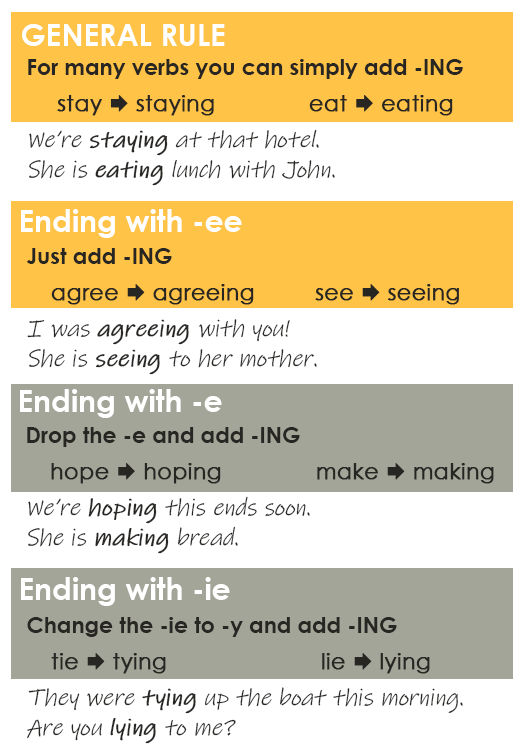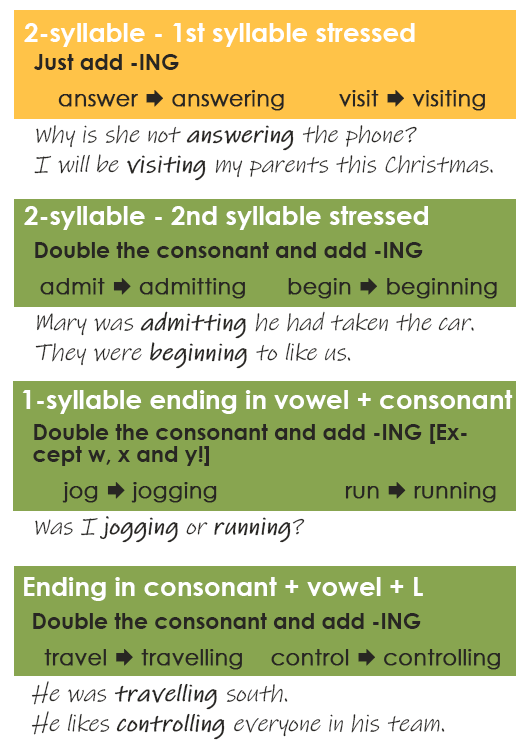
Verb forms are necessary to be able to use verb tenses. They can be difficult with all their rules and exceptions! Let’s explore them together….
There is a bit of a pattern to these rules believe it or not! A lot to do with ease of pronunciation.
But, if it helps you feel better, this is one of those things even native speakers struggle with.
It is not impossible to learn though, so we will help you get there… ready?
The -ING form of the verb is used to show a ‘progressive‘ action (also called ‘continuous‘). This means an action that is in progress at one particular time, it could be the past, present or future… It is also used when actions are interrupted.
PAST – They were going home when I saw them.
PRESENT – He‘s studying.
FUTURE – I will be seeing you tomorrow!
It is also used for gerunds, which are verbs that are used as nouns in the subject or object of a sentence.
Gerund subject
Performing the action.
Swimming helps me relax.
Writing is an exchange of ideas. Reading is a core skill.
Gerund direct object
Receiving the action.
I like cooking.
He doesn’t mind paying.
We need to think about quitting.
Gerund indirect object
Action is directed towards it.
I gave singing my all.
Kate spent her life teaching.
We taught them writing.
The -ING form is also used after ‘go’ in many (but not all 😅) expressions related to leisure-time activities.
Let’s go bowling!
We like to go dancing.
Why don’t we go fishing this weekend?
The rules for transforming a verb to the -ING form…


And that is it! It wasn’t too bad after all! 😎
Here you have some online games to help you practice what you have learnt! ENJOY!!
There is a nice collection of -ING verb form exercises on this page!!
